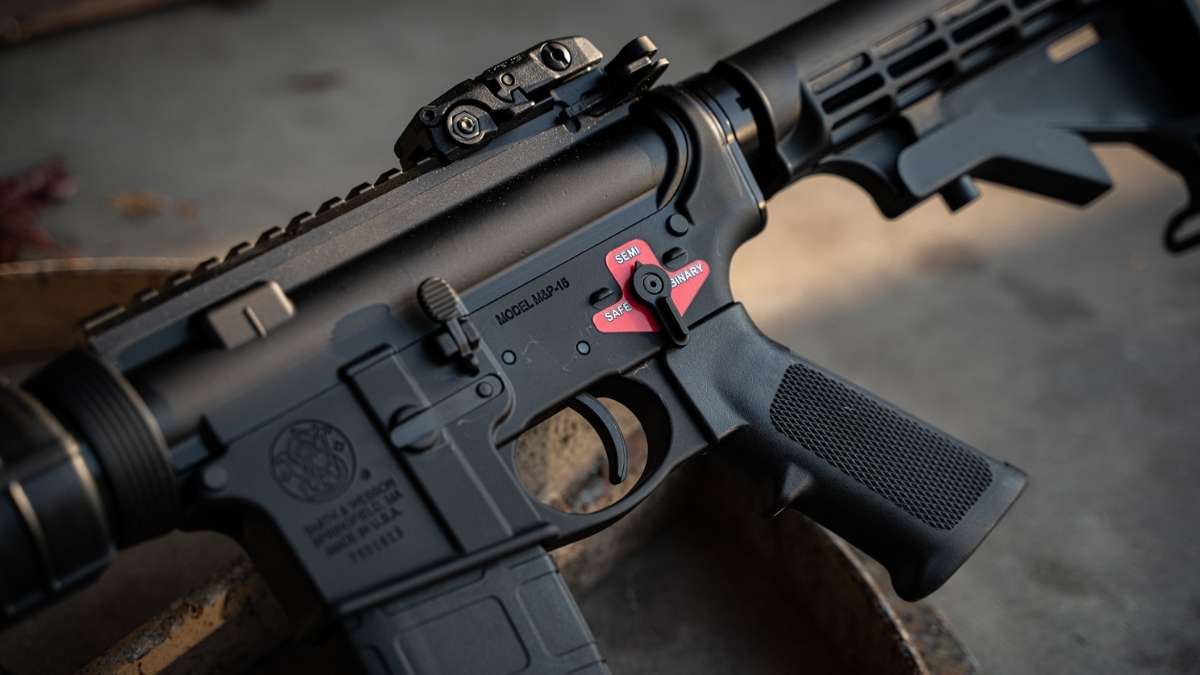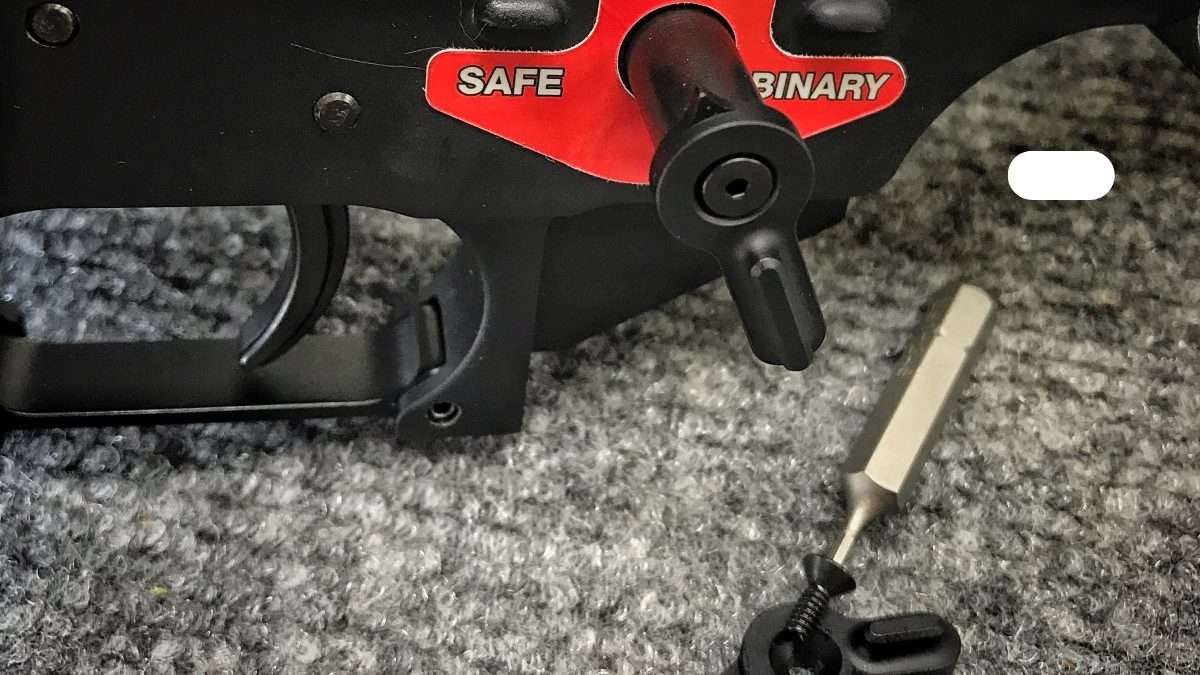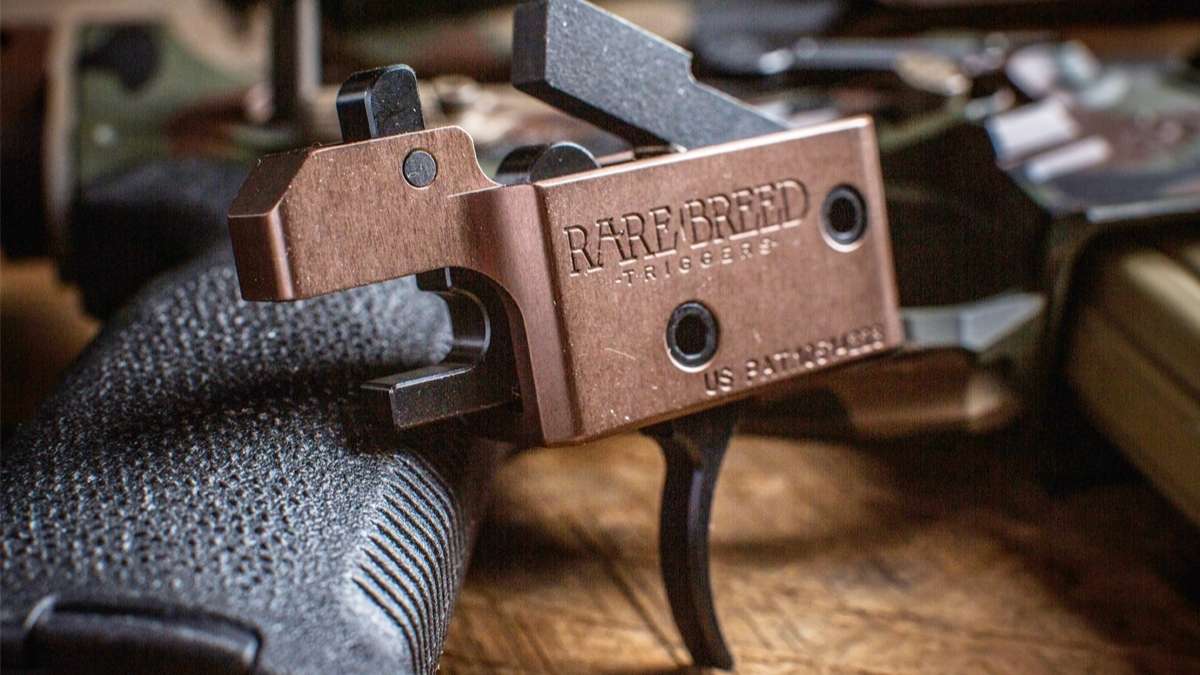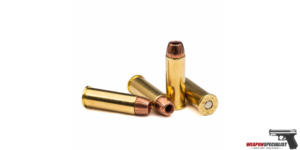A binary trigger is a type of firearm trigger that allows the shooter to fire one round when the trigger is pulled and another round when the trigger is released. This type of trigger can increase the rate of fire of a firearm, making it faster than a traditional semi-automatic trigger.
Binary triggers work by using a mechanism that releases the hammer when the trigger is pulled and again when it is released. This allows for a round to be fired both when the trigger is pulled and when it is released, effectively doubling the rate of fire.
Binary triggers are legal in most states in the United States, but there are some restrictions in certain areas. They are popular among gun enthusiasts and competitive shooters who want to increase the speed and accuracy of their shooting.
It is important to note that binary triggers should only be used by experienced shooters who are familiar with their firearm and understand the potential risks associated with using a binary trigger.
Improper use of a binary trigger can lead to accidental discharges and other safety issues.
How Does a Binary Trigger Work?

A binary trigger is a type of firearm trigger that allows a shooter to fire two rounds with a single trigger pull. This is accomplished through a unique mechanical design that utilizes three positions instead of the traditional two positions found in most triggers. The three positions are:
- Safe
- Semi-Automatic
- Binary
When the trigger is in the safe position, the firearm cannot be fired. When the trigger is in the semi-automatic position, the firearm fires one round with each trigger pull.
When the trigger is in the binary position, the firearm fires one round when the trigger is pulled and another round when the trigger is released.
The binary trigger works by using a sear that holds the hammer in place until the trigger is pulled. When the trigger is pulled, the sear releases the hammer, which strikes the firing pin and fires the first round.
When the trigger is released, a second sear catches the hammer and holds it in place until the trigger is pulled again. When the trigger is pulled again, the second sear releases the hammer, which strikes the firing pin and fires the second round.
Binary triggers are popular among gun enthusiasts for their unique firing capabilities and are legal in most states. However, they are not allowed in some states and are heavily regulated in others.
It is important to research and understand the laws in your state before purchasing or using a firearm equipped with a binary trigger.
Functionality of a Binary Trigger
At its core, a binary trigger is a firearm accessory designed to modify the firing process. Unlike traditional semi-automatic triggers that require a separate trigger pull for each round fired, a binary trigger enables the shooter to fire a round both when the trigger is pulled and released. This means that a single pull of the trigger results in two shots being fired.
The binary trigger operates through a mechanical system that allows for this unique firing capability. When the trigger is pulled, it releases the hammer, striking the firing pin and firing the first round.
As the trigger is released, it resets the hammer, preparing it to strike again when the trigger is pulled once more. This binary action allows for a significantly increased rate of fire compared to standard semi-automatic triggers.
Legality and Regulations for Binary Trigger
The legality of binary triggers varies depending on the country or region. In some places, they may be legal for civilian use, while in others, they may be restricted to military and law enforcement personnel only.
It is crucial for gun owners to familiarize themselves with the laws and regulations governing binary triggers in their specific jurisdiction to ensure compliance.
In the United States, for example, the legality of binary triggers falls under the National Firearms Act (NFA). While semi-automatic firearms are widely available for civilian use, fully automatic firearms are highly regulated under the NFA.
Binary triggers, which offer a firing mechanism similar to full auto, often fall into a gray area of interpretation. It is essential to consult local laws and seek legal advice to determine the specific regulations and restrictions regarding binary triggers.
Benefits and Drawbacks of Binary Trigger
Binary triggers offer several advantages that make them appealing to certain gun owners. One significant benefit is the increased rate of fire.
By allowing for two shots to be fired with a single trigger pull, binary triggers can significantly enhance the speed at which rounds are discharged. This feature can be advantageous in situations that require rapid fire, such as competitive shooting or self-defense scenarios.
Additionally, binary triggers provide enhanced control and accuracy. By eliminating the need to reset the trigger manually between shots, shooters can maintain better control over their aim, resulting in improved accuracy.
Furthermore, binary triggers offer versatility, as shooters can easily switch between semi-automatic and binary firing modes, adapting to different shooting situations and preferences.
However, binary triggers also come with certain limitations and potential drawbacks. One such limitation is the higher cost associated with these triggers compared to traditional triggers.
Due to their complex design and mechanics, binary triggers tend to be more expensive. This cost factor can be a deterrent for some gun owners who may opt for more affordable alternatives.
Safety concerns are another important consideration when it comes to binary triggers. The increased rate of fire they offer may pose challenges in terms of safety and control.
Without proper training and responsible handling, the potential for accidents or unintentional discharges can be higher. It is crucial for gun owners to prioritize safety, undergo appropriate training, and adhere to proper handling practices when using firearms equipped with binary triggers.
Furthermore, the controversial nature of binary triggers should be acknowledged. Some individuals and organizations perceive them as a potential loophole to acquire fully automatic firing capabilities.
This perception has led to debates and discussions surrounding their legality and the need for stricter regulations. It is essential to consider the broader implications and public opinions surrounding binary triggers when making decisions about their use.
Pros and Cons of Using a Binary Trigger

Binary triggers have been gaining popularity among gun enthusiasts due to their unique firing mechanism.
However, like any other firearm accessory, binary triggers come with their own set of pros and cons.
Pros
- Increased firing rate: Binary triggers allow for a faster firing rate, which can be useful in certain situations, such as competitive shooting or self-defense.
- Improved accuracy: The binary trigger’s two-stage firing mechanism can help improve accuracy by reducing trigger pull weight and minimizing trigger movement.
- Fun to shoot: Many gun enthusiasts find binary triggers to be a fun and exciting accessory to use at the range.
Cons
- Expensive: Binary triggers can be expensive, with some models costing several hundred dollars.
- Requires practice: Using a binary trigger requires practice and training to use effectively and safely.
- Potential legal issues: Binary triggers may not be legal in all states or jurisdictions, so it is important to research and understand local laws before purchasing one.
Applications and Use Cases for Binary Trigger
Binary triggers find applications in various fields, including military and law enforcement, competitive shooting, and recreational shooting.
In military and law enforcement contexts, binary triggers can offer tactical advantages by providing increased firepower and rapid response capabilities when needed.
However, it is important to note that the specific use of binary triggers by these professionals may be subject to strict regulations and protocols.
Competitive shooters often appreciate the speed and versatility offered by binary triggers. In shooting sports such as three-gun competitions, where speed and accuracy are paramount, binary triggers can provide a competitive edge.
The ability to quickly engage targets without compromising control can enhance performance and potentially lead to higher scores.
Recreational shooters and gun enthusiasts may also enjoy the unique experience and versatility provided by binary triggers.
Whether it’s the thrill of rapid-fire shooting or the ability to switch between firing modes seamlessly, binary triggers can enhance the shooting experience for those seeking a different approach to their firearm usage.
Safety and Responsible Use for Binary Trigger
When it comes to binary triggers or any firearm accessory, safety should always be the top priority. Proper training and education are paramount for gun owners who choose to utilize binary triggers.
Understanding the mechanics, operation, and potential risks associated with these triggers is essential to ensure safe handling.
Gun owners should seek out reputable training programs that cover the specific nuances of using binary triggers.
These programs should emphasize proper trigger discipline, control, and adherence to safe shooting practices. Responsible ownership also entails securely storing firearms and ammunition to prevent unauthorized access and minimize the risk of accidents.
Alternatives to Binary Triggers
While binary triggers offer unique firing capabilities, there are alternative options available for achieving desired shooting characteristics.
Some shooters may choose to explore other trigger modifications or aftermarket options that can provide increased rate of fire or improved control without fully replicating binary trigger functionality.
It is important to research and consult with experts to find legal and suitable alternatives that align with individual preferences and legal requirements.
Binary Trigger FAQs
Q: Is a binary trigger legal?
The legality of binary triggers varies depending on the jurisdiction. In some states, they are legal for use in certain firearms, while in others, they are prohibited.
Q: What are the benefits of using a binary trigger?
The primary benefit of a binary trigger is that it allows for faster firing rates and can increase the overall rate of fire of a firearm.
Q: What are the downsides of using a binary trigger?
The main downside of using a binary trigger is that it can be more difficult to control the rate of fire, which can lead to ammunition waste or even safety concerns if the shooter is unable to control the weapon.
Q: Are binary triggers safe?
Binary triggers can be safe when used properly and responsibly. However, they can also be dangerous if not used appropriately or if the shooter is not experienced with their use.
Q: Can binary triggers be used for hunting?
Binary triggers are legal for hunting in some states, but their use is typically discouraged due to their high rate of fire and potential to waste ammunition.
Q: Do binary triggers make guns more accurate?
Binary triggers do not necessarily make guns more accurate. Instead, they can allow for faster firing rates, which may increase the number of rounds that hit a target, but may also make it more difficult to control the weapon and maintain accuracy.
Q: Are binary triggers difficult to install?
Binary triggers can be more difficult to install than traditional triggers and may require the services of a qualified gunsmith or firearms expert.
Q: Can binary triggers be installed on any firearm?
Binary triggers are designed to work with specific firearms, and not all firearms are compatible with binary triggers. It is important to check with the manufacturer of the firearm and the trigger to ensure compatibility before attempting to install a binary trigger.
Conclusion
Binary triggers are a unique type of trigger mechanism that allow for faster firing rates than traditional semi-automatic firearms. They work by firing one round when the trigger is pulled and another round when the trigger is released. While binary triggers can be fun to shoot and offer a unique shooting experience, they are not without controversy.
Some people argue that binary triggers are too dangerous and should be banned. Others argue that they are perfectly safe when used responsibly and that banning them would infringe on their Second Amendment rights. Ultimately, the decision of whether or not to use a binary trigger is up to the individual shooter.
It’s important to note that binary triggers are not legal in all states and jurisdictions. Before purchasing or using a binary trigger, be sure to check your local laws and regulations.
Last Updated on December 5, 2023 by







